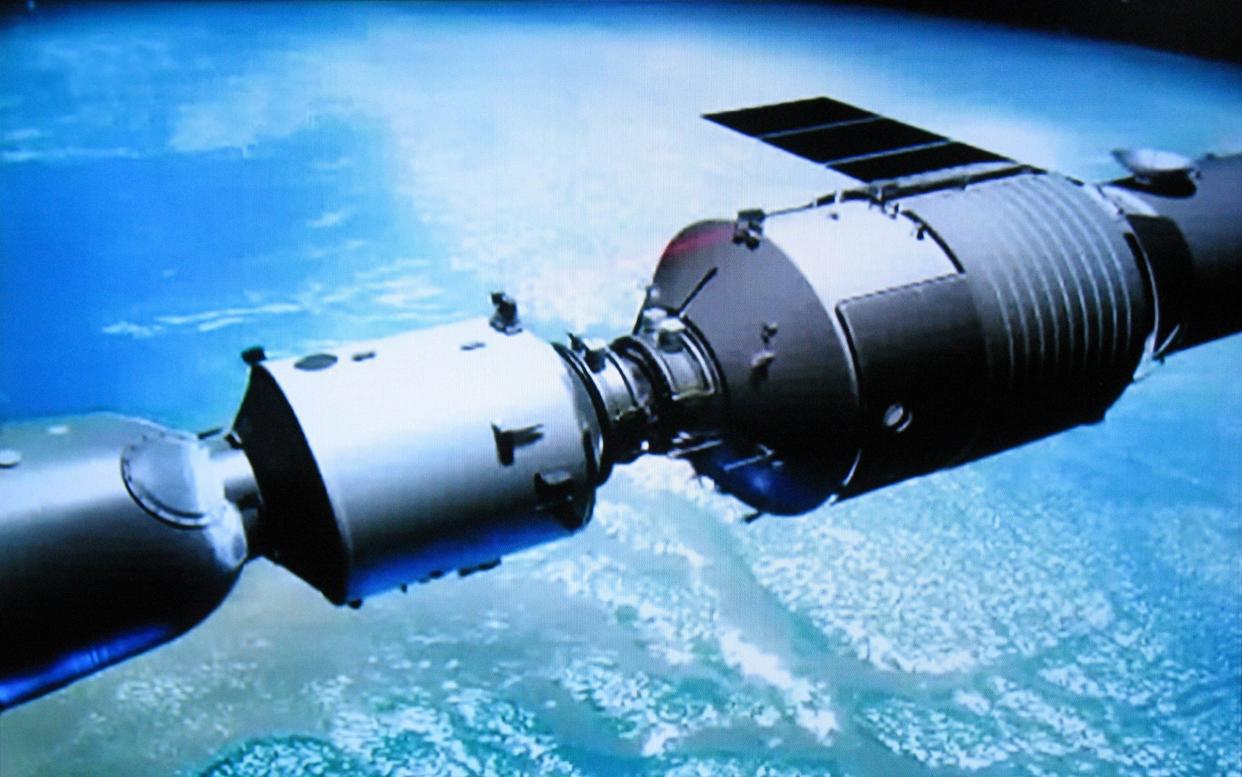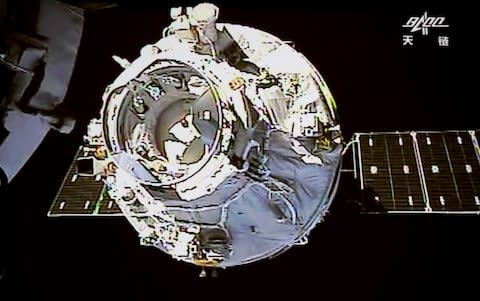China's falling space station 'to crash down to Earth over Easter weekend'

An out-of-control Chinese space station moving at 17,000mph is set to plummet to Earth over the Easter weekend, leaving space experts scrambling to guess where.
Tiangong-1, or "The Heavenly Palace," could re-enter the atmosphere over a major city and scientists will not know until a few hours before it happens.
China's first space station, which weighs eight tonnes, was supposed to have a "controlled re-entry" splashing down in the Pacific Ocean thousands of miles from civilisation.
But in March 2016 communication with it was lost and Chinese scientists were no longer able to fire up its engines.
It has since been orbiting in an ever-descending death spiral. On Tuesday it was at an altitude of 130 miles and falling faster than ever before.
The space station was expected to re-enter the atmosphere between March 31 and April 4.
Potential crash area for the 8 tonne space module Tiangong-1
China claimed it would burn up on re-entry but space experts said, for an object of that size, between 10 per cent and 40 per cent of it could survive the fireball, with pieces reaching land or the ocean.
A spokesman for the European Space Agency said: "It can be surmised that Tiangong-1 will break up during its atmospheric re-entry, and that some parts will survive the process and reach the surface of Earth."
The station went into orbit in September 2011 and was designed for testing technologies related to docking in orbit.
China has released little information apart from its altitude and without more details of its design European scientists and Nasa have had little information on which to base their predictions for the landing area.

Advancing China's space programme is a priority for President Xi Jinping, who has called for Beijing to become a global space power with both advanced civilian space flight and capabilities that strengthen national security.
Tiangong-1 was originally planned to be decommissioned in 2013 but China has repeatedly extended the length of its mission.
It is currently tumbling over about once every three minutes as it orbits the Earth 16 times a day.
Some experts played down the risk of being hit.

They advised those who were concerned not to change their daily behaviour, and to worry more about crossing the street than looking to the sky to see if they were about to be struck by space debris.
Stijn Lemmens, an ESA space debris expert based in Germany, said: "Over the past 60 years of space flight, we are nearing the mark of 6,000 uncontrolled re-entries of large objects, mostly satellites and upper rocket stages.
"Only one event actually produced a fragment which hit a person, and it did not result in injury."
He said the odds of being hit were one in 1.2 trillion, or 10 million times less likely than getting hit by lightning.
The only person known to have been hit by space debris was Lottie Williams, in Tulsa, Oklahoma.
In 1997 she was struck on the shoulder by a six-inch piece of metal from a Delta 2 rocket

